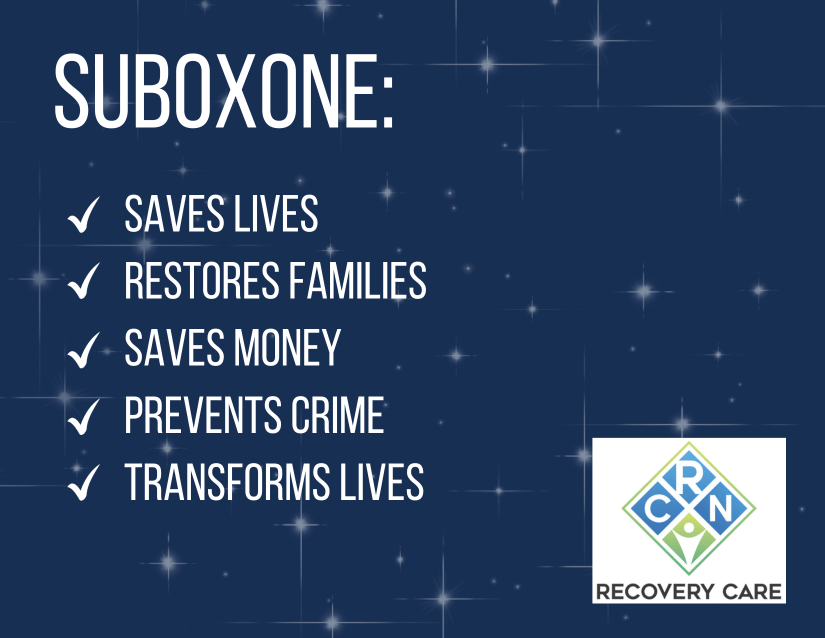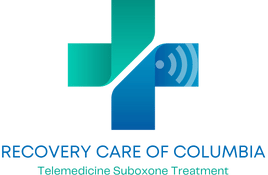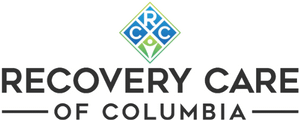Columbia Suboxone Clinic Blog
Suboxone Treatment for Opioid Addiction

Opioid addiction is a widespread and devastating public health crisis, affecting millions of individuals and families worldwide. Suboxone treatment is the leading solution for treating opioid use disorder.
Fortunately, there are effective treatment options available to help those struggling with opioid addiction regain control of their lives. One such solution is Suboxone treatment.
In this comprehensive guide, we will explore the use of Suboxone as a crucial tool in the fight against opioid addiction.
From understanding what Suboxone is and how it works to its benefits and potential side effects, we’ll cover everything you need to know about Suboxone treatment and how it can be a pathway to recovery.
What is Suboxone?
Suboxone is a prescription medication approved by the U.S. Food and Drug Administration (FDA) for the treatment of opioid addiction. It is a combination of two active ingredients: buprenorphine and naloxone. Each component plays a specific role in aiding recovery:
Buprenorphine: This is a partial opioid agonist, which means it interacts with the same opioid receptors in the brain as drugs like heroin or prescription opioids. However, it only partially activates these receptors, providing relief from cravings and withdrawal symptoms without producing the intense high associated with full opioids.
Naloxone: Naloxone is an opioid antagonist, designed to deter misuse of Suboxone. If someone tries to inject or misuse Suboxone, the naloxone component will block the effects of opioids, preventing the user from getting high.
Read the Suboxone Patient Medication Guide
How Does Suboxone Work?
Suboxone works by stabilizing the brain’s opioid receptors, reducing cravings, and alleviating withdrawal symptoms. When taken as prescribed, it allows individuals to function normally without the disruptive highs and lows associated with opioid use. Here’s how Suboxone treatment typically works in the various phases of treatment:
- Induction: A healthcare provider initiates Suboxone treatment during the early stages of withdrawal. The patient must be in mild to moderate withdrawal before starting Suboxone to avoid triggering severe withdrawal symptoms.
- Stabilization: Once the appropriate dose of Suboxone is determined, the patient enters the stabilization phase. During this phase, cravings and withdrawal symptoms are effectively managed.
- Induction: A healthcare provider initiates Suboxone treatment during the early stages of withdrawal. The patient must be in mild to moderate withdrawal before starting Suboxone to avoid triggering severe withdrawal symptoms.
- Stabilization: Once the appropriate dose of Suboxone is determined, the patient enters the stabilization phase. During this phase, cravings and withdrawal symptoms are effectively managed.
- Maintenance: The maintenance phase involves the ongoing use of Suboxone to prevent relapse and maintain recovery. The duration of this phase varies from person to person and can last for several months or even years.
Benefits of Suboxone Treatment
Suboxone treatment offers several advantages in the battle against opioid addiction:
- Reduced Cravings: Suboxone helps reduce intense cravings for opioids, making it easier for individuals to focus on recovery.
- Withdrawal Symptom Relief: The medication alleviates the discomfort of opioid withdrawal, which often drives individuals back to substance use.
- Lower Risk of Overdose: Because Suboxone contains naloxone, it discourages misuse and lowers the risk of fatal opioid overdoses.
- Improved Quality of Life: By stabilizing their opioid receptors, individuals can regain control of their lives, rebuild relationships, and pursue personal and professional goals.
- Lowered Risk of Infectious Diseases: Suboxone treatment reduces the likelihood of opioid users contracting diseases such as HIV or hepatitis through shared needles.
- A Sense of Wellbeing: Many Suboxone users claim Suboxone provides a calming sensation, and a sense of wellbeing.
- Pain Relief: Suboxone is not prescribed for pain relief in the USA, but is believed to be used in other countries as a safer alternative to full-agonist opioids.
Potential Side Effects
While Suboxone is generally safe and well-tolerated when used as prescribed, it may have some side effects. These side effects can vary from person to person and may include:
- Nausea and Vomiting: In very rare cases, some individuals may experience mild nausea or vomiting when first starting Suboxone.
- Constipation: Opioid medications often cause constipation. Patients should maintain proper hydration and consider dietary changes to manage this side effect.
- Sweating: Excessive sweating can occur, particularly during the early stages of treatment. However, this is usually associated as a side-effect of induction (see above)
- Headache: Headaches are a less common side effect but may still occur in some individuals.
- Insomnia: Difficulty sleeping can be a temporary side effect of Suboxone.
It’s essential to discuss any side effects with your healthcare provider, as they can adjust the dosage or suggest alternative medications if necessary.
The Role of Counseling and Therapy
While Suboxone treatment can be an essential component of opioid addiction treatment, it is most effective when combined with counseling and therapy. Behavioral therapy helps individuals address the underlying issues that contribute to addiction, develop coping strategies, and make necessary lifestyle changes. Here are some common types of counseling and therapy used in conjunction with Suboxone treatment:
- Cognitive-Behavioral Therapy (CBT): CBT helps individuals identify and change negative thought patterns and behaviors associated with addiction.
- Individual Counseling: One-on-one sessions with a therapist provide a safe space to explore personal challenges, set goals, and track progress.
- Group Therapy: Group therapy sessions allow individuals to connect with peers facing similar challenges and share their experiences.
- Family Therapy: Family therapy helps repair and strengthen relationships damaged by addiction and provides support for both the individual in treatment and their loved ones.
Suboxone Treatment Combined with Individual Counseling is the Leading Solution for Treating Opioid Use Disorder
Suboxone treatment can be a lifeline for those struggling with opioid addiction, offering relief from cravings and withdrawal symptoms while reducing the risk of overdose. However, it’s important to remember that Suboxone is just one part of a comprehensive approach to recovery.
Combined with counseling and therapy, Suboxone treatment can help individuals regain control of their lives, repair relationships, and build a better future.
Recovery is possible, and Suboxone treatment may be the first step toward a healthier, drug-free life. Remember, you don’t have to face this journey alone, and there is hope for a brighter tomorrow.
Recovery Care Can Help with Your Opioid Addiction
Recovery Care serves all of Tennessee, providing a TennCare-approved Suboxone Telemedicine Addiction Treatment Program.
If you or a loved one is battling opioid addiction, don’t hesitate to contact us by phone or text at (931) 548-3062 and speak to a representative.
Or, if you’ve made the decision to begin opioid addiction treatment using Suboxone, you can sign-up now using one of the following links:



